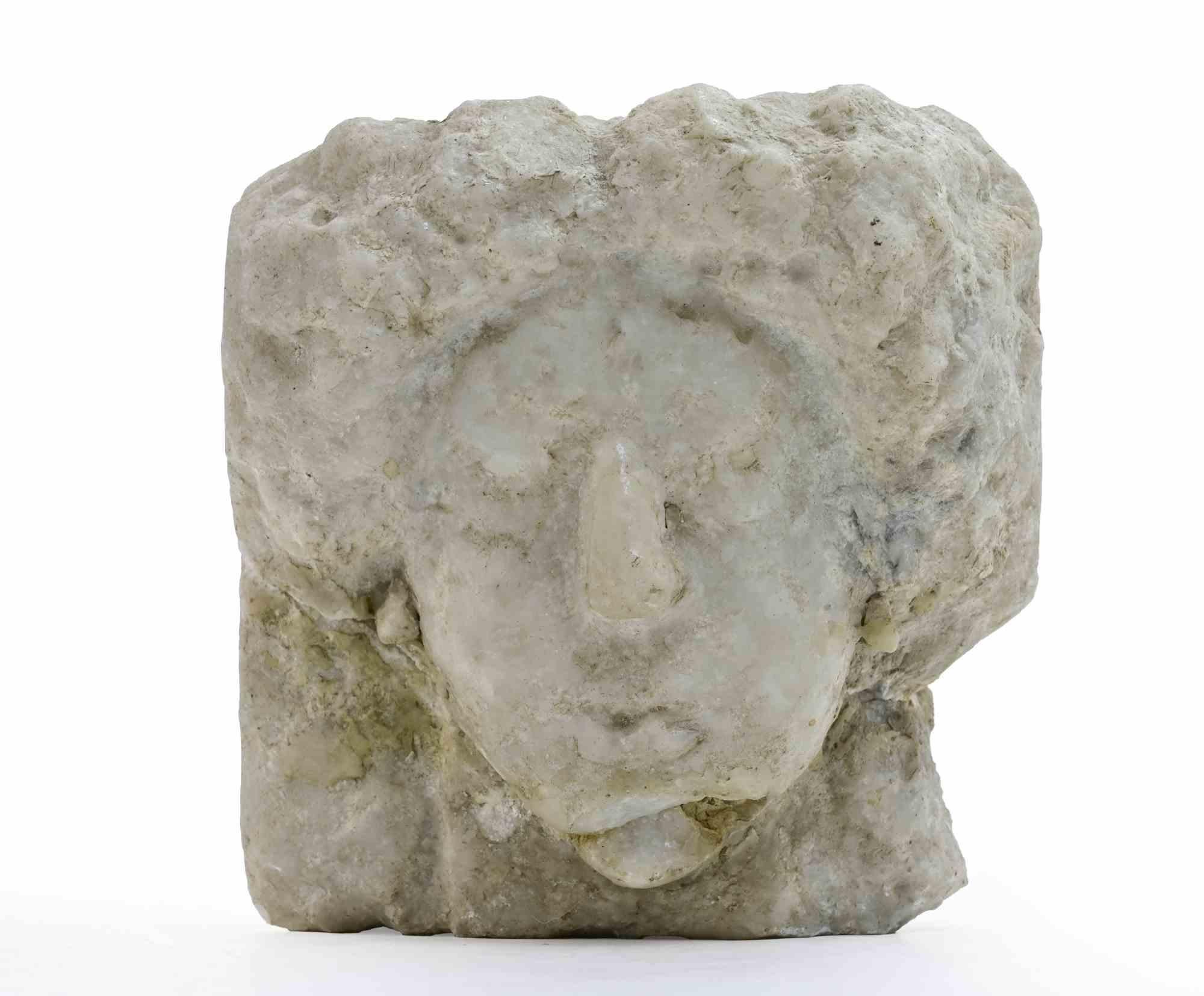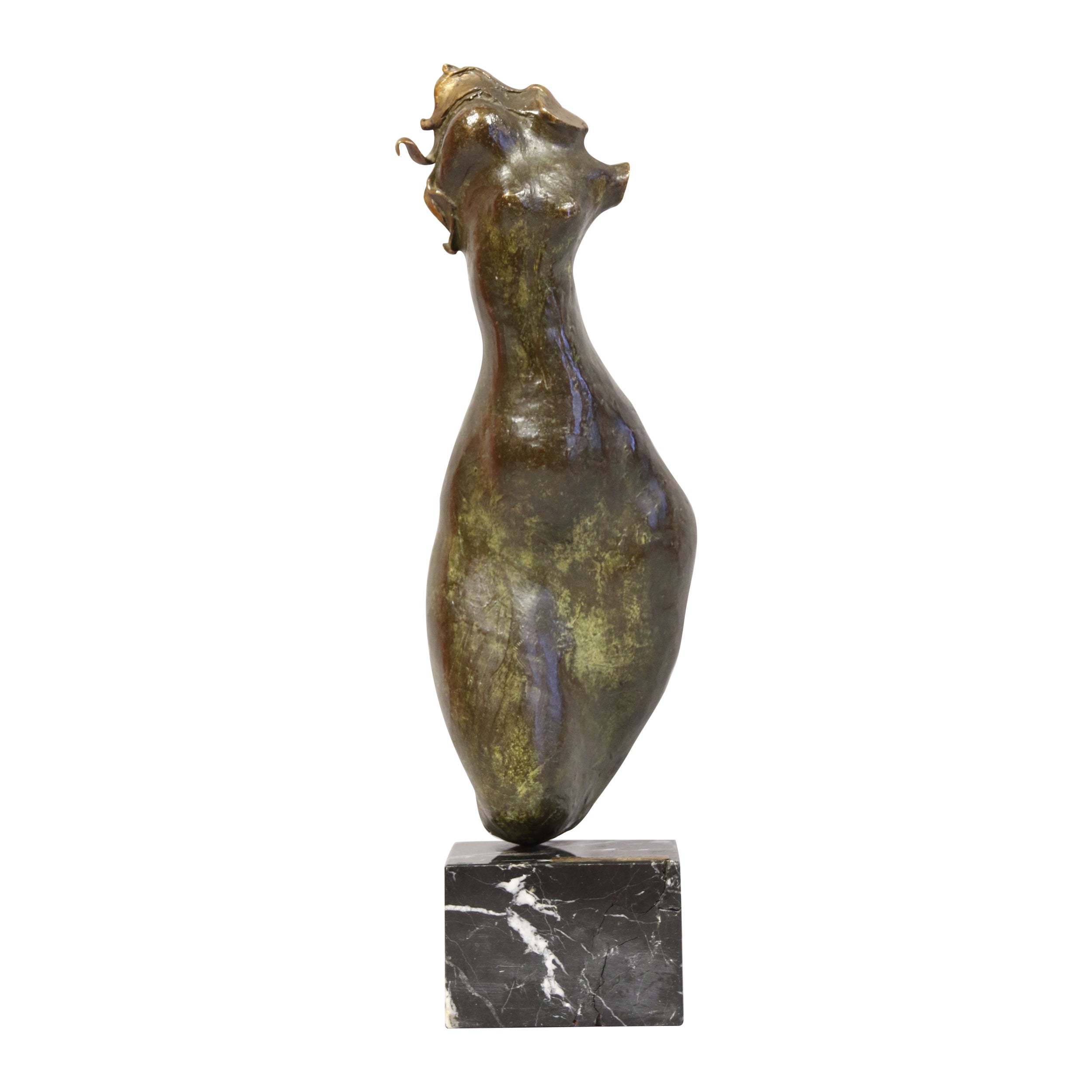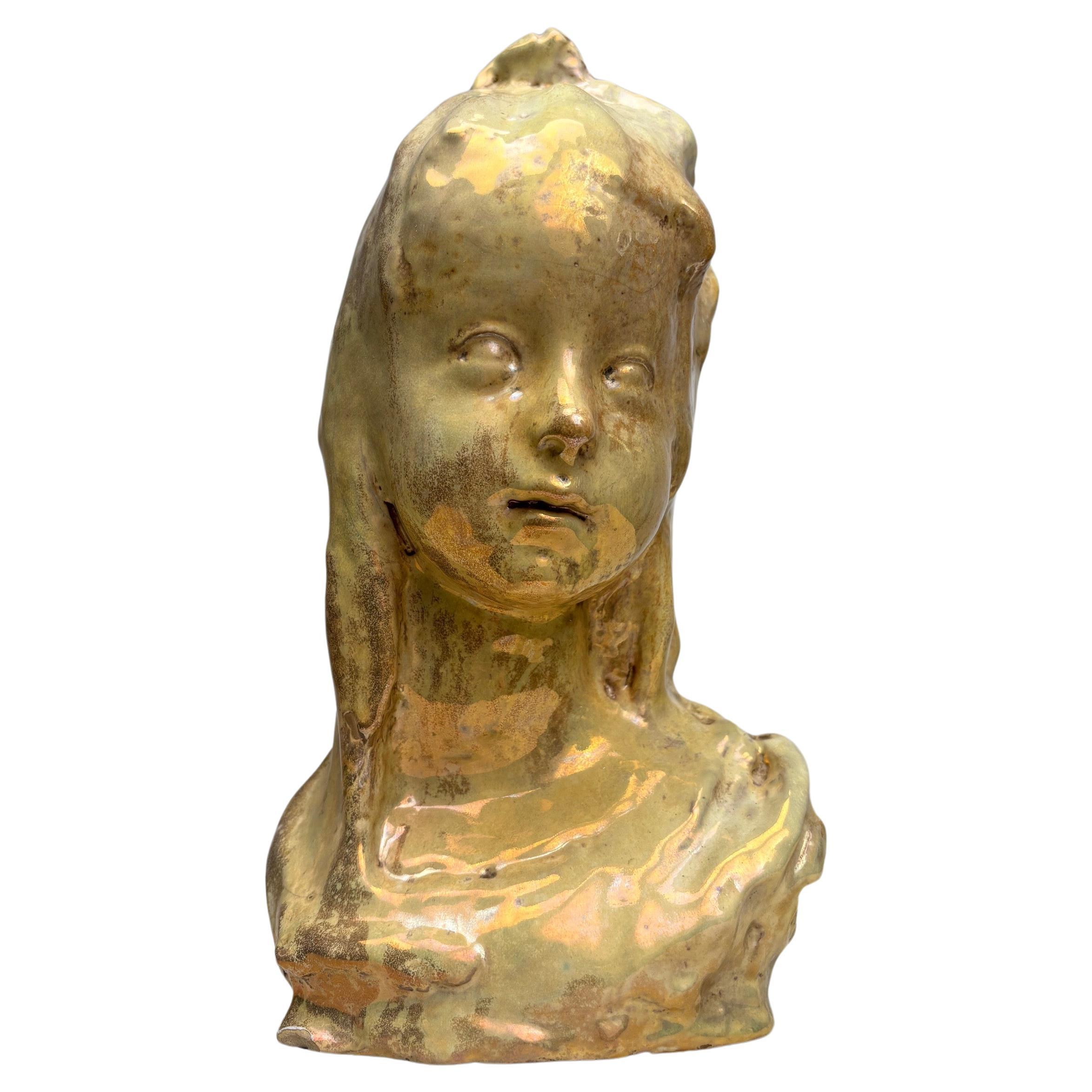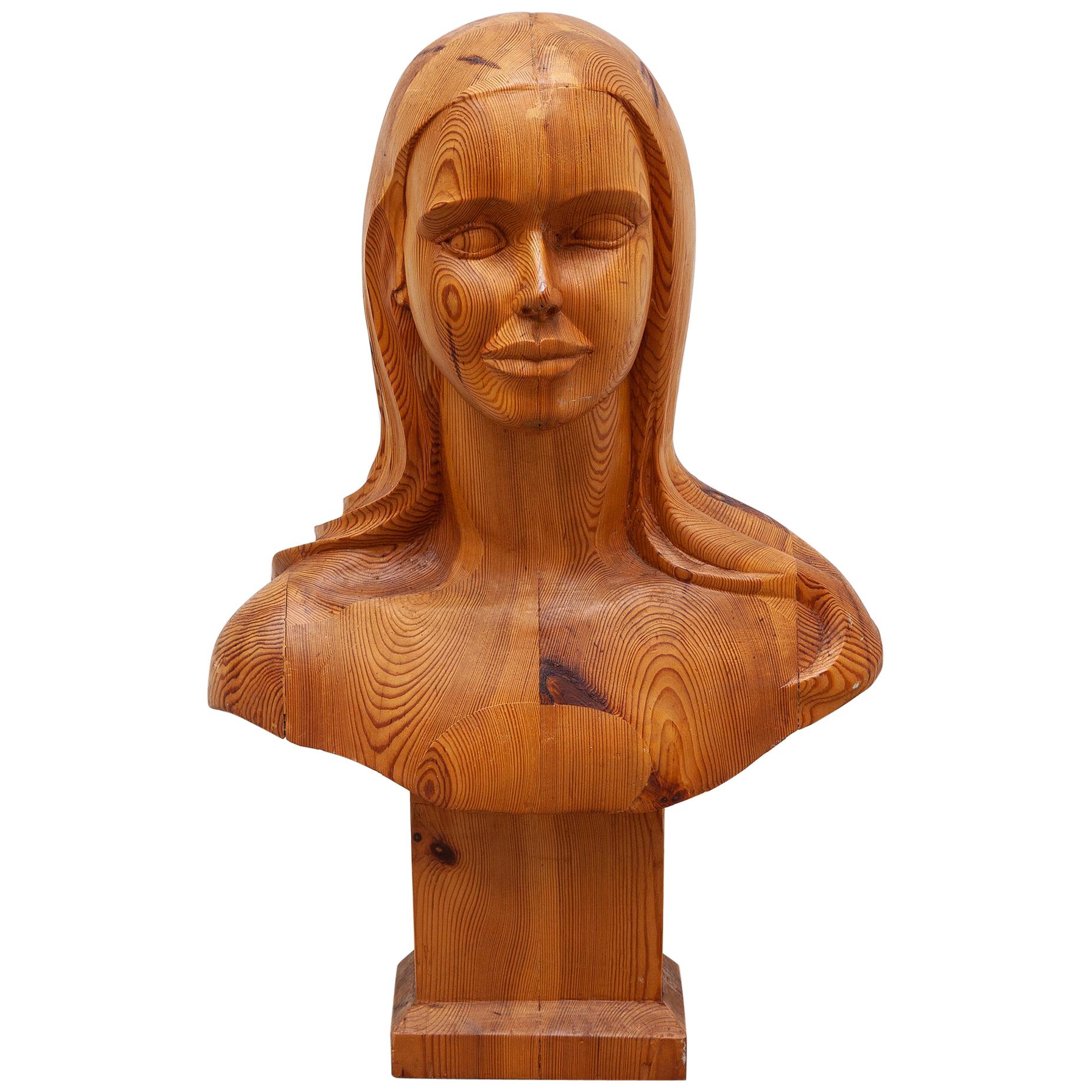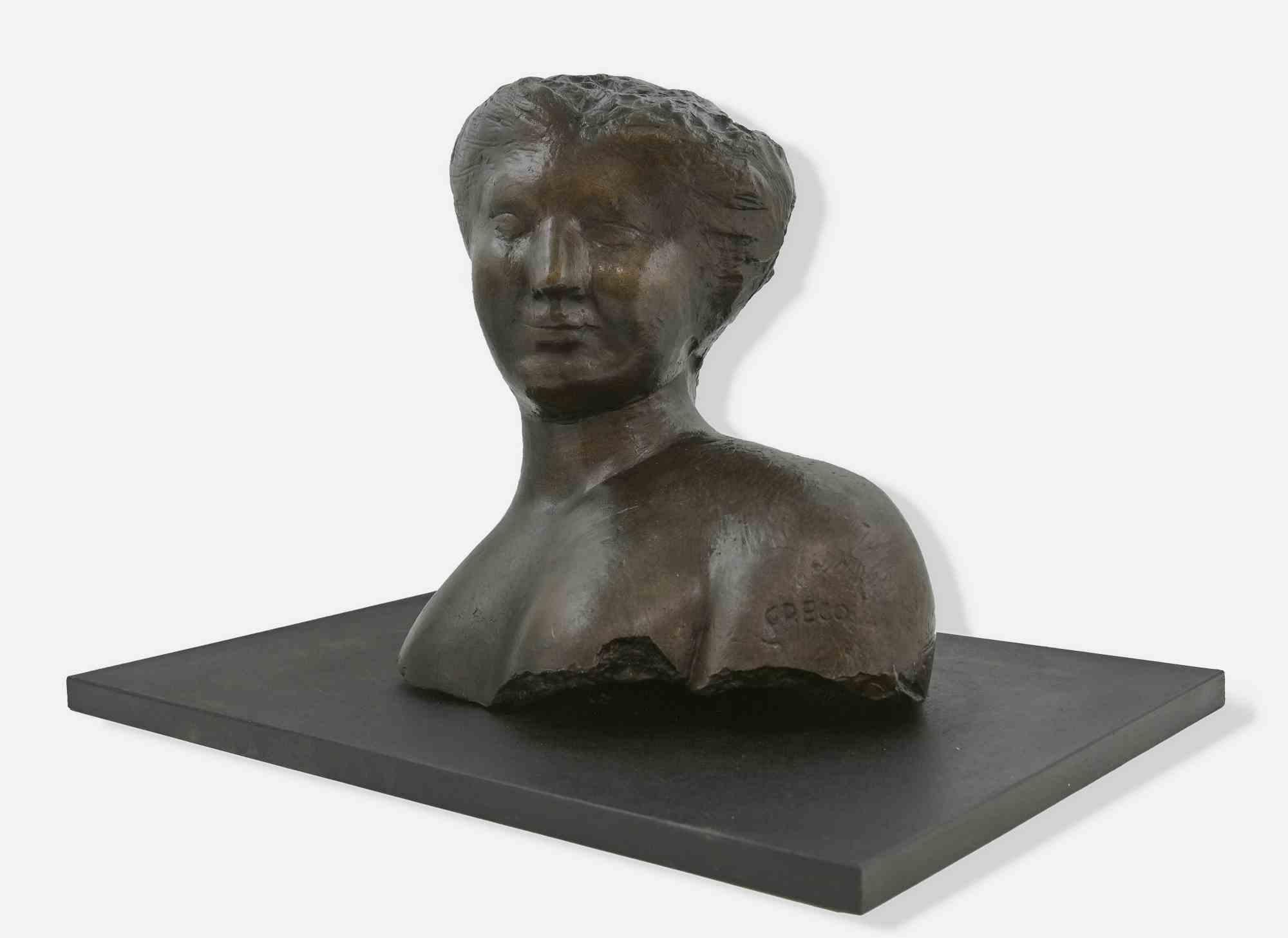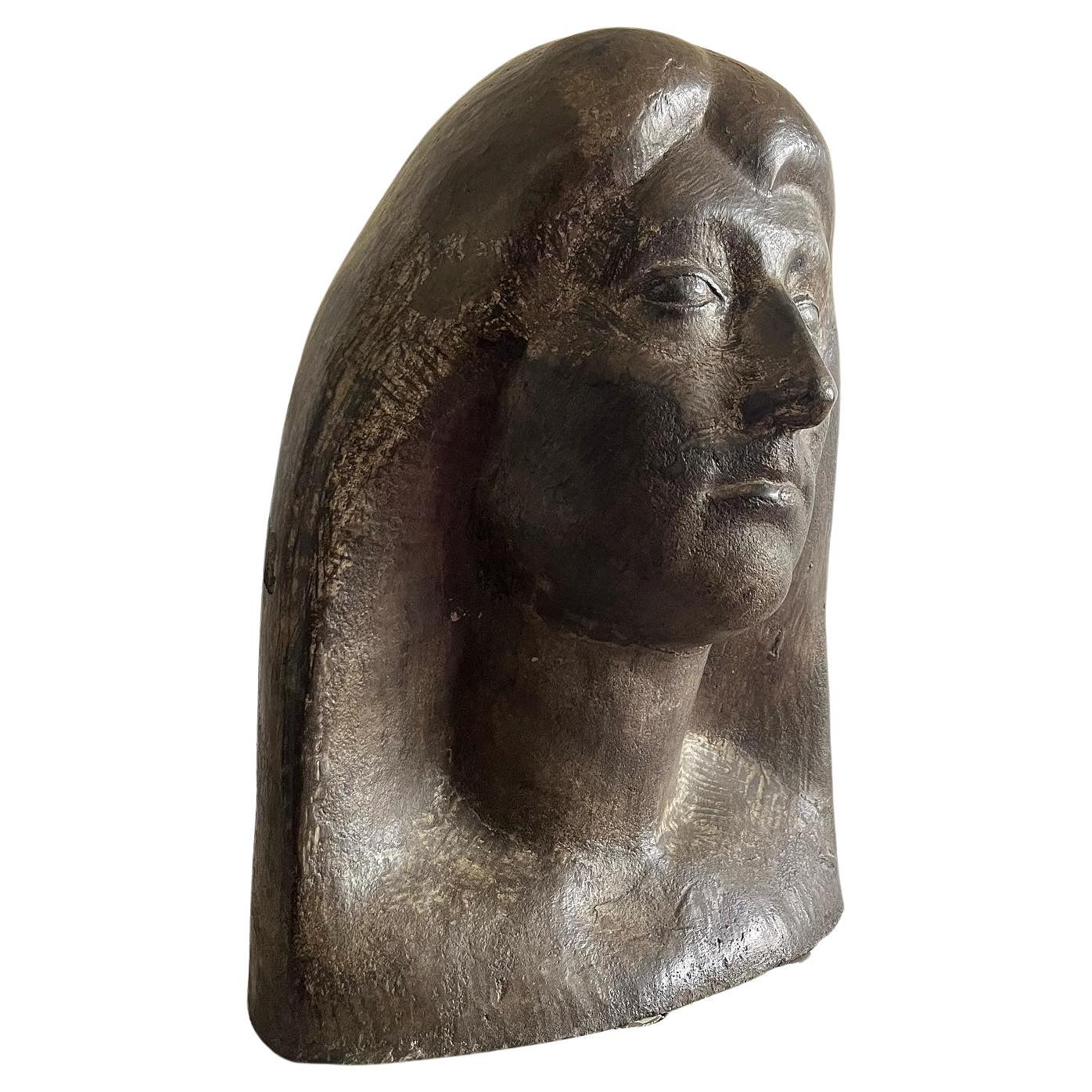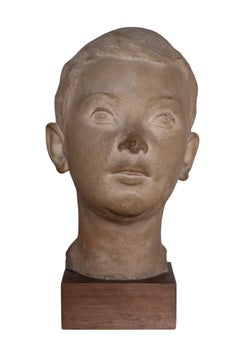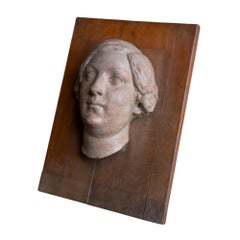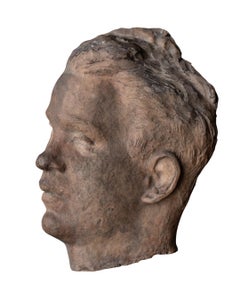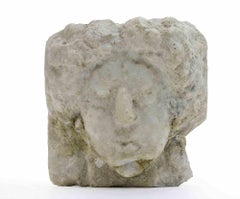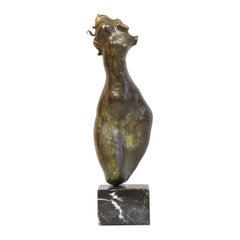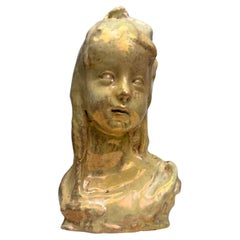Items Similar to Bust Of A Young Girl In Arte Povera Style. Italy. Mid 20th Century.
Video Loading
Want more images or videos?
Request additional images or videos from the seller
1 of 18
UnknownBust Of A Young Girl In Arte Povera Style. Italy. Mid 20th Century.
$707.58
£529.64
€600
CA$973.84
A$1,085.44
CHF 569.50
MX$13,255.04
NOK 7,211.05
SEK 6,815.54
DKK 4,567.62
About the Item
Bust Of A Young Girl In Arte Povera Style, Italy,mid 20th century.
Bust of a young girl , follower of Arte Povera artistic movement, Italy, around 1970.
Sculpture in fir wood. Italy.
Arte Povera movement favored deliberately "raw" materials to have a strong expressiveness.
Period: mid 20th century
Good condition with minor sighns of wear
Material: Carved Solid wood
Width 20cm
Height: 63cm
Depth:26cm
The wood of the sculpture is worked in a raw and geometric way.
The head of the young woman has her eyes closed, hinting at the dreamlike state of the dreamlike poetry of this sculpted image.
Interesting combination of the roughness of the material, the wood fibers and the lyricism of the girl's facial expression, long neck.
This expressive image plays with Naive and sophistication.
- Dimensions:Height: 24.81 in (63 cm)Width: 7.88 in (20 cm)Depth: 10.24 in (26 cm)
- Medium:
- Movement & Style:
- Period:
- Condition:
- Gallery Location:Firenze, IT
- Reference Number:1stDibs: LU2464215732902
About the Seller
4.9
Vetted Professional Seller
Every seller passes strict standards for authenticity and reliability
Established in 2016
1stDibs seller since 2023
80 sales on 1stDibs
Typical response time: 6 hours
- ShippingRetrieving quote...Shipping from: Firenze, Italy
- Return Policy
Authenticity Guarantee
In the unlikely event there’s an issue with an item’s authenticity, contact us within 1 year for a full refund. DetailsMoney-Back Guarantee
If your item is not as described, is damaged in transit, or does not arrive, contact us within 7 days for a full refund. Details24-Hour Cancellation
You have a 24-hour grace period in which to reconsider your purchase, with no questions asked.Vetted Professional Sellers
Our world-class sellers must adhere to strict standards for service and quality, maintaining the integrity of our listings.Price-Match Guarantee
If you find that a seller listed the same item for a lower price elsewhere, we’ll match it.Trusted Global Delivery
Our best-in-class carrier network provides specialized shipping options worldwide, including custom delivery.More From This Seller
View AllPortrait of boy, terracotta sculpture, 1930s-40s, Giorgio Rossi (1894-1981).
Located in Firenze, IT
Portrait of boy, terracotta sculpture, 1930s-40s, Giorgio Rossi (1894-1981). Tuscan Sculptor.
Terracotta modeled by hand by the artist. Unique piece.
Dimensions: Height 31 cm.
The...
Category
1930s Art Deco Figurative Sculptures
Materials
Terracotta
Woman's face, terracotta sculpture, 1930s-40s, Giorgio Rossi (1894-1981).
Located in Firenze, IT
Woman's face, terracotta sculpture, 1930s-40s, Giorgio Rossi (1894-1981). Tuscan Sculptor.
Terracotta modeled by hand by the artist. Unique piece.
Dimensions: Height 27 cm.
The ch...
Category
1930s Art Deco Figurative Sculptures
Materials
Terracotta
Woman with flowers on head, terracotta, 1930s-40s, Giorgio Rossi (1894-1981).
Located in Firenze, IT
Woman with flowers on head, terracotta, 1930s-40s, Giorgio Rossi (1894-1981). Tuscan Sculptor.
Terracotta modeled by hand by the artist. Unique piece.
Dimensions: Height 53 cm.
The...
Category
1930s Art Deco Figurative Sculptures
Materials
Terracotta
Asymmetrical head of man, terracotta, 1930s-40s, Giorgio Rossi (1894-1981).
Located in Firenze, IT
Asymmetrical head of man, terracotta sculpture, 1930s-40s, Giorgio Rossi (1894-1981). Terracotta modeled by hand by the artist. Unique piece.
Dimensions: Height 34 cm.
The choice ...
Category
1930s Art Deco Figurative Sculptures
Materials
Terracotta
Woman with hands above head, terracotta, 1945, Giorgio Rossi (1894-1981).
Located in Firenze, IT
Woman with hands above head, terracotta, 1945, Giorgio Rossi (1894-1981), Tuscan Sculptor.
Terracotta sculpture of a nude woman modeled by hand by the artist. Unique piece.
Dimensi...
Category
1940s Art Deco Figurative Sculptures
Materials
Terracotta
Seated Female Nude, circa 1930-1940, Giorgio Rossi (1894–1981), Tuscan sculptor
Located in Firenze, IT
Seated Female Nude, circa 1930-1940, Giorgio Rossi (1894–1981), Tuscan sculptor
Period: circa 1930-1940
Artist: Giorgio Rossi (1894–1981)
This sculptu...
Category
1930s Nude Sculptures
Materials
Clay, Terracotta
You May Also Like
Head of Girl - Sculpture by Sirio Pellegrini - 1960s
Located in Roma, IT
Marble sculpture realized by Sirio Pellegrini in 1960s.
Very Good condition.
Sirio Pellegrini, born in Rome on March 1, 1922, of Abruzzo origins (Capestrano), spent his childhood y...
Category
1960s Modern Figurative Sculptures
Materials
Terracotta
Clemente Ochoa, "Bust of a Young Woman with Long Hair"
By Manuel Clemente Ochoa 1
Located in Saint-Ouen, FR
Ochoa Clemente (Born in Spain, 1937)
Bust of a young woman with long hair
Bronze brown patina, lost wax
Signed
Marble base.
Category
20th Century Abstract Sculptures
Materials
Bronze
Pietro Melandri, Head of a Girl based on a design by Domenico Matteucci (Signed)
By Pietro Melandri
Located in Argelato, BO
Pietro Melandri, Head of a Girl based on a design by Domenico Matteucci, Italy, 1950s
Precious and refined work, signed at the bottom by the author
Category
Vintage 1950s Italian Mid-Century Modern Figurative Sculptures
Materials
Ceramic
French Women Bust Sculpture "Marianne" Godess of Liberty in Solid Wood, 1960s
Located in Antwerp, BE
Vintage French bust sculpture of a woman Marianne has been the national personification of the French Republic since the French Revolution, as a personification of liberty, equality, fraternity and reason, and a portrayal of the Goddess of Liberty...
Category
Vintage 1960s French Mid-Century Modern Busts
Materials
Wood
$1,427 Sale Price
58% Off
Bust of a Woman - Sculpture by Emilio Greco - Mid-20th Century
By Emilio Greco
Located in Roma, IT
Bust of a woman is a sculpture made by Emilio Greco (1913-1955) in the second half of 20th century.
Woman with her hair up and a hint of a smile.
The bust is made of bronze with a...
Category
1970s Contemporary Figurative Sculptures
Materials
Bronze
Buste de femme de Robert ROCCA 1960
Located in LYON, FR
Joli buste en ciment à patine bronze de l'artiste Français Robert ROCCA.
Superbe patine et très belle exécution, l'ensemble est signé sous la base et daté 1960.
Parfait état
Category
Vintage 1960s French Brutalist Busts
Materials
Concrete
